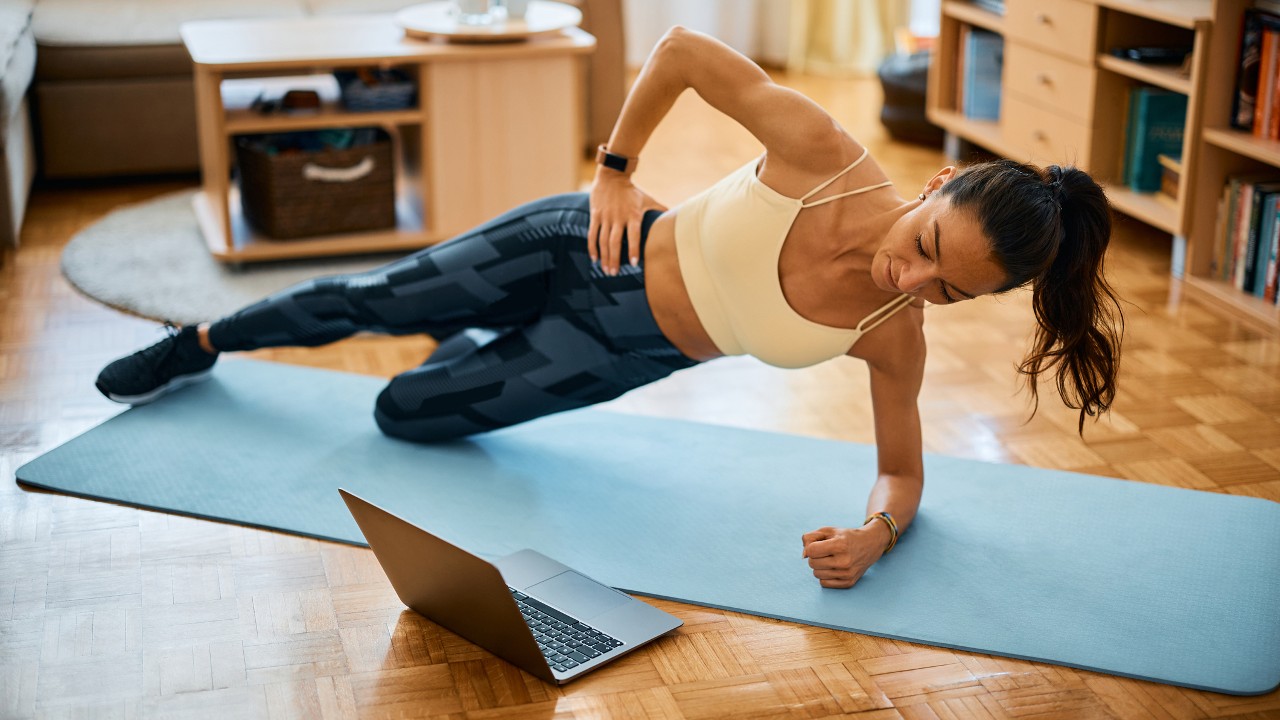Side Plank: The Best Abs Move You’re (Probably) Not Doing
The side plank is an often overlooked exercise for building strong abs. Reap the benefits with this form guide and variations

There aren’t many moves that are as good for your midsection as the side plank, yet it’s often overlooked in favour of the standard face-down, forearm-supported plank. There’s nothing wrong with that – the plank is one of the best core exercises you can do – but the side plank brings other muscles into play and helps to develop strength and stability in your midsection.
Below you’ll find all the info you need to make the side plank a fixture in your workouts, including a form guide and several great variations on the exercise.
Side Plank Benefits
The side plank works a couple of key muscle groups that are often neglected by even the best abs exercises, such as crunches. One is the quadratus lumborum, part of the posterior abdominal wall, which plays a prominent role in averting back pain. The side plank is also one of the best obliques exercises, another muscle group that can be missed with many core exercises.
The side plank is also a unilateral move, working either side of your body separately. This will help identify any weaknesses in your joints and muscles, enabling you to address them before they become chronic. If you find you can hold a side plank easily on one side and barely at all on the other then there’s an imbalance you need to work on.
How To Do The Side Plank
Start on your side with your feet together, supporting your upper body on one forearm with your elbow positioned directly beneath your shoulder. Contract your core and raise your hips until your body forms a straight line from head to feet. Hold this position without letting your hips drop for the allotted time for each set, then repeat on the other side.
How long should you hold a side plank for?
The longer you hold the side plank, the better, as long as you’re doing it with flawless form. Anything in excess of a minute is good, two minutes plus is excellent.
Side Plank Form Tips
- Ensure you are balancing on the side of your foot and not the sole – this is key to prolonging stability.
- Engage your abdominals at all times to keep the body rigid. Forget to do this and your body will probably sway and lose strength.
- Try to keep your head and neck straight. Ideally, find a spot on the wall and keep your eyes locked on it.
Side Plank Variations
Kneeling side plank

If you’re finding the standard side plank too tough to hold for longer than a few seconds then build up your oblique strength slowly by starting with this less demanding variation. Lie on your side supporting yourself on your forearm and your knees, rather than your feet. Engage your core and hold a straight line from your knees to your head – don’t let your hips sag.
Raised side plank

Starting in the classic side plank position, raise your top arm and leg to form a star shape. Lifting an arm and a leg introduces other muscles into the hold and makes your core work harder to maintain balance. As always, don’t let your hips sag.
Sign up for workout ideas, training advice, reviews of the latest gear and more.
Gym ball side plank

Rest your supporting arm on a gym ball. The extra instability makes it tougher to hold the position. Use your core muscles to control the wobble.
Bosu ball side plank
Resting your feet or elbow on a bosu ball adds instability to the exercise, increasing the challenge to your core without being as tough a variation as the gym ball version. Although if you have both to hand (and a forgiving audience) you can up the ante by resting your elbow on the gym ball and your feet on the bosu ball.
Side plank with rotation
Adding some controlled movement during a side plank increases the challenge to your core and involves other muscles. Start in the classic side plank position and then extend your top arm towards the ceiling. Slowly rotate your torso to bring your hand under and through beneath your body, then reverse the movement to come back into a plank. Aim to keep hips raised throughout and only rotate as far as you can while keeping the movement controlled.

Joe Warner is a highly experienced journalist and editor who began working in fitness media in 2008. He has featured on the cover of Men’s Fitness UK twice and has co-authored Amazon best-sellers including 12-Week Body Plan. He was the editor of Men’s Fitness UK magazine between 2016 and 2019, when that title shared a website with Coach.
